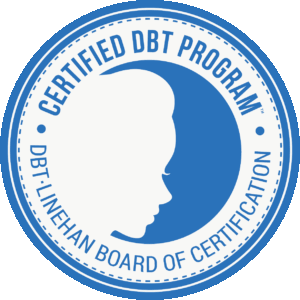“I’m not doing it. I don’t want to.”
“That’s NOT how it’s supposed to be.”
“It’s MY way or the highway.”
“I can’t because….”

We have all had these sorts of thoughts running through our minds at some point in time. Regardless of the situations that bring them to the surface, they are usually a sign that we are feeling angry, frustrated, sad, disappointed, or possibly even stuck. These thoughts can be labeled as everyday terms such as stubbornness, controlling, one-sided, or rejecting.
In the world of DBT though, we have a particular skill that describes these series of thoughts and their associated behaviors exactly:
It is called Willingness vs Willfulness.
The pro of Willfulness? We ALL experience it, even myself. Heck, I had willfulness even just sitting down to write this blog ABOUT willfulness!
The con? It can show up at the worst of times and block us towards our end goal.
What exactly defines willfulness?
What does it look like from person to person, situation to situation?
There is no clear-cut answer here, but there are several things one can look for in their thoughts, emotions, actions, even body postures, to call willfulness out when it arises.
But first off, let’s define Willfulness more exactly.
Willfulness is defined per the DBT Skills Manual as “Refusing to tolerate the moment, and not making changes that are needed. Trying to control things that cannot be changed or be the ‘fixer’ when things cannot be fixed. Giving up and giving in, attachment to ‘me’ and my wants only, and the essential opposite of ‘doing what works.’” Because it involves an inability to accept facts of the current moment which in turn brings us distress, it is considered an essential skill from the Distress Tolerance “Reality Acceptance” skill sets.
Willful thoughts may sound something like the statements that began this blog, such as “I can’t do this.” Or, “I’m not going.” “This is the ONLY way.” Generally speaking, our thoughts influence our willful actions to follow. Willful actions may look like procrastinating, not following through with a task, rejecting an invite or not showing up to a planned event, rejecting others’ advice, or controlling our environments by going out of our way to fix things that don’t seem to really have a solution.
We show willfulness even through our body postures!
Stances such as putting your hands on your hips, rolling your eyes, loud sigh sounds, feet stomping, door slamming, or even slumping in a hiding motion, all indicate willfulness is within us through and through.
Am I brave enough to call out and story tell about my own willful behavior? Of course I am!
A few years back, I went on a family trip and an activity was planned that day that was not of my interest. Instead of enjoying the activity and being fair by recognizing we all can do things we enjoy on the trip, I was totally sour about it. I sat there the whole time, face frowning, arms crossed, barely interacting with anyone, thinking how I just couldn’t wait for it to be over so I could do what I wanted to do. Not only did I end up missing out on some cool things that day, but I was totally not present with my family and missed out on my time with them.
If willfulness can show up anytime, anywhere, what is one to do to overcome this?
We can’t just walk around all the time saying ‘no’ to things, trying to always be in perfect control, or avoiding because we simply can’t tolerate it.
The answer to this question is to turn willful behavior into willing behavior.
Willingness is essentially willfulness’ counterpart. To be willing means to “Do what works, do just what is needed in each situation, wholeheartedly, without dragging our feet.” Because willfulness can sometimes be as thick as a mountain, it is not as easy as waving a magic wand to go from willfulness to willingness in a pinch. Below are some steps to transition from willful behavior to more willing behavior:
1-Observe you are being willful.
This means notice how your thoughts, emotions, and body postures are changing. You may want to think about from a Wise Mind standpoint the types of situations, settings, people, or tasks that bring willfulness to the surface so you can more readily identify them next time they show up.
2-Radically accept you are being willful.
We have a saying here in DBT-Don’t fight willfulness with willfulness! So if you are being willful, accept it and embrace it, don’t fight back against it.
3-Turn your mind towards acceptance and willingness.
Basically, we need to make an inner commitment, a choice, to reduce our willfulness and take the most effective course of action here. Label what willing behavior would look like. What would I say or do that would demonstrate that I am more willing in this situation? What are 1-2 action steps that I can take? Changing your body postures to more relaxed positions can also help.
Remember, once we start to pave the way from willful behavior to more willing behavior, the outcome is always a much sunnier one. In my experience as a therapist, whenever I ask my clients their response and long term ‘pros’ to changing their willful behavior, the chances of them saying they are very happy they did are very high. I even noticed in myself thoughts of “I am enjoying this!” as I wrote this blog, where at the start I was willful, procrastinating, and just could not seem to sit myself down to write.
So I leave you all with this notion-be skillful, not willful! And when willfulness does show up, observe it, acknowledge we are all human and embrace it, tackle it, and praise yourself for overcoming a very difficult moment. Feel free to share with us your most willful experiences and how you overcame them!




